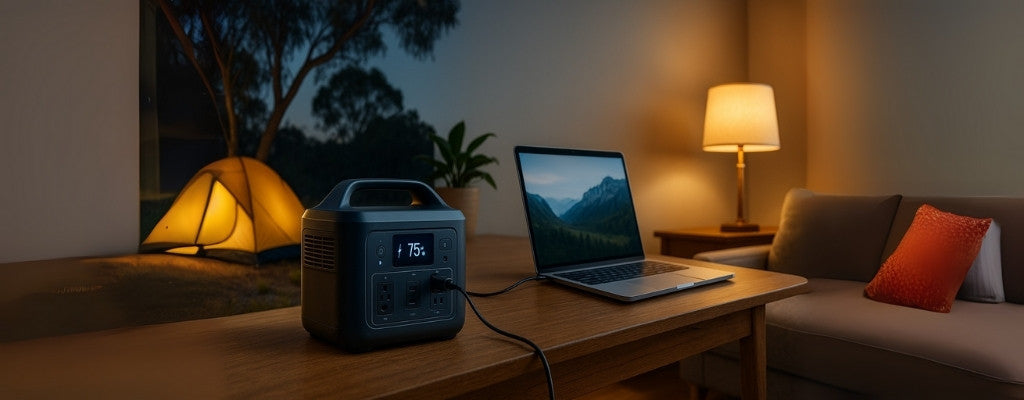
What is a Portable Power Station?
You’re off the grid, your devices are dying, and there’s no wall socket in sight. Whether you’re camping under the stars or facing an unexpected blackout, a portable power station gives you safe, quiet backup power without the hassle of petrol or noise. Let’s break down what these units do, how they work, and which one fits your life.
Not sure which power station is right for you?
Take the quiz!
What Does a Portable Power Station Do?
At its core, a portable power station is a rechargeable battery system that stores and delivers electricity. It allows you to plug in and run electronics or small appliances wherever there’s no mains power—like in the bush, on the road, or during a blackout. Unlike fuel generators, they’re quiet, emission-free, and suitable for indoor or outdoor use.
What Is a Solar Portable Power Station?
A solar portable power station is simply one that can recharge using solar panels. Most units also accept wall and car charging, but solar gives you true off-grid independence. It’s especially useful for remote travel, camping, or emergency preparedness. Just connect compatible solar panels, and you can top up your battery anywhere the sun shines.

Common Portable Power Station Applications
What Is a Portable Power Station for Camping?
Camping is where these power stations shine. Power your tent lights, charge your phone and GoPro, run a portable fridge, or even brew coffee at sunrise. They’re quiet enough to use in a national park and compact enough to pack in the car. For multi-day trips, solar charging keeps you going without returning to town.
What Is a Portable Power Station for Home?
At home, portable power stations act as backup during power outages. Use one to keep your internet modem running, charge your phone, power a CPAP machine, or run a small fridge. Some high-capacity models can even power appliances like washing machines or microwaves in short bursts. It's an essential part of a modern emergency kit.
How to Choose the Right Portable Power Station
Battery Size and Wattage
- Watt-hours (Wh) indicate how much energy is stored.
- Wattage (W) is what the station can power at once.
A 300Wh unit is great for phones and laptops; a 2000Wh model handles fridges, tools, and more.
Charging Methods
- Wall Outlet (AC) – Fastest and most reliable.
- Car Charger – Ideal for road trips.
- Solar Panels – Best for remote use and long-term independence.

Battery Type
- Lithium-ion – Lightweight, solid lifespan.
- LiFePO4 – Safer, longer cycle life, better for heavy use.
- Lead-acid – Cheaper, heavier, less efficient.
Design and Safety Features
- Ventilation and thermal controls to prevent overheating
- Overload and short-circuit protection
- Clear digital display for easy monitoring
Conclusion: Why a Portable Power Station Belongs in Every Home or Adventure Kit
So, what does a portable power station do? It provides convenient, clean energy wherever you need it—whether you’re living off-grid, travelling, or just want peace of mind at home. From solar-powered setups to emergency-ready backups, there’s a model to suit every need. Think of it as your portable insurance policy for staying connected, comfortable, and in control—no matter what.
You might also like:
- Can a Power Station Run a House?
- How Do You Use a Portable Power Station?
- How Much Is a Portable Power Station?
- What Are Portable Power Stations?
- What Is a Portable Power Station Used For?
- What Portable Power Stations Are Made in USA?


